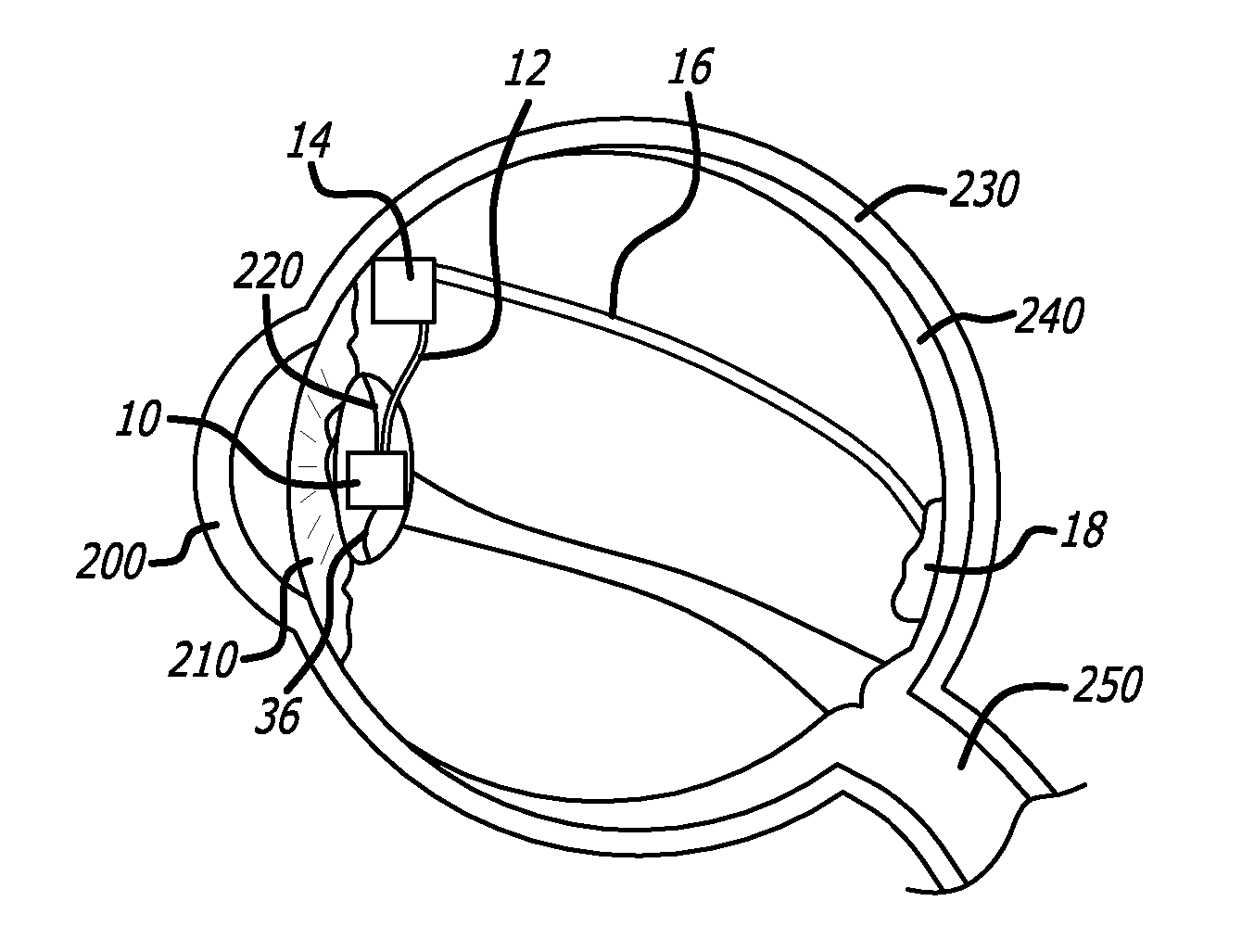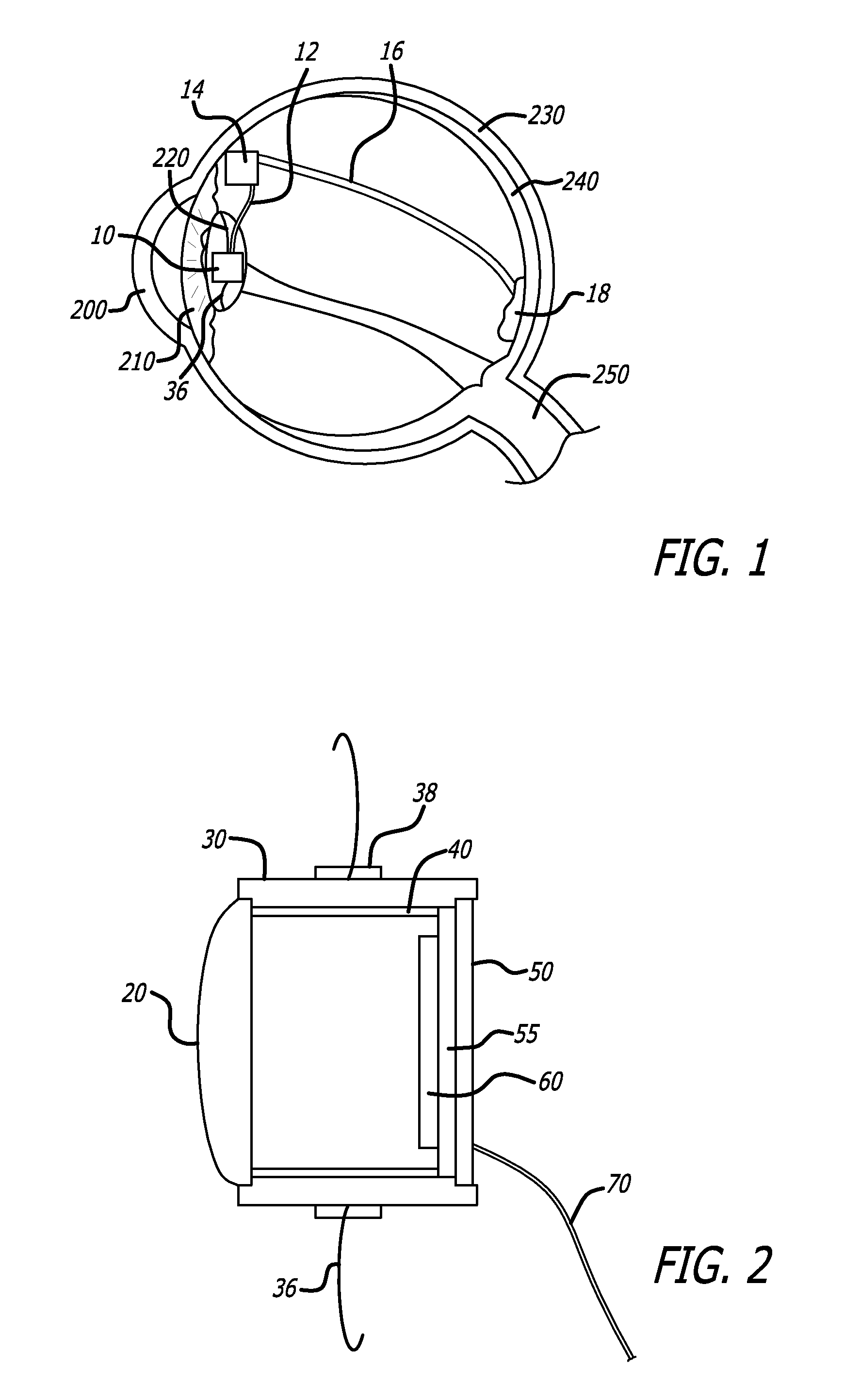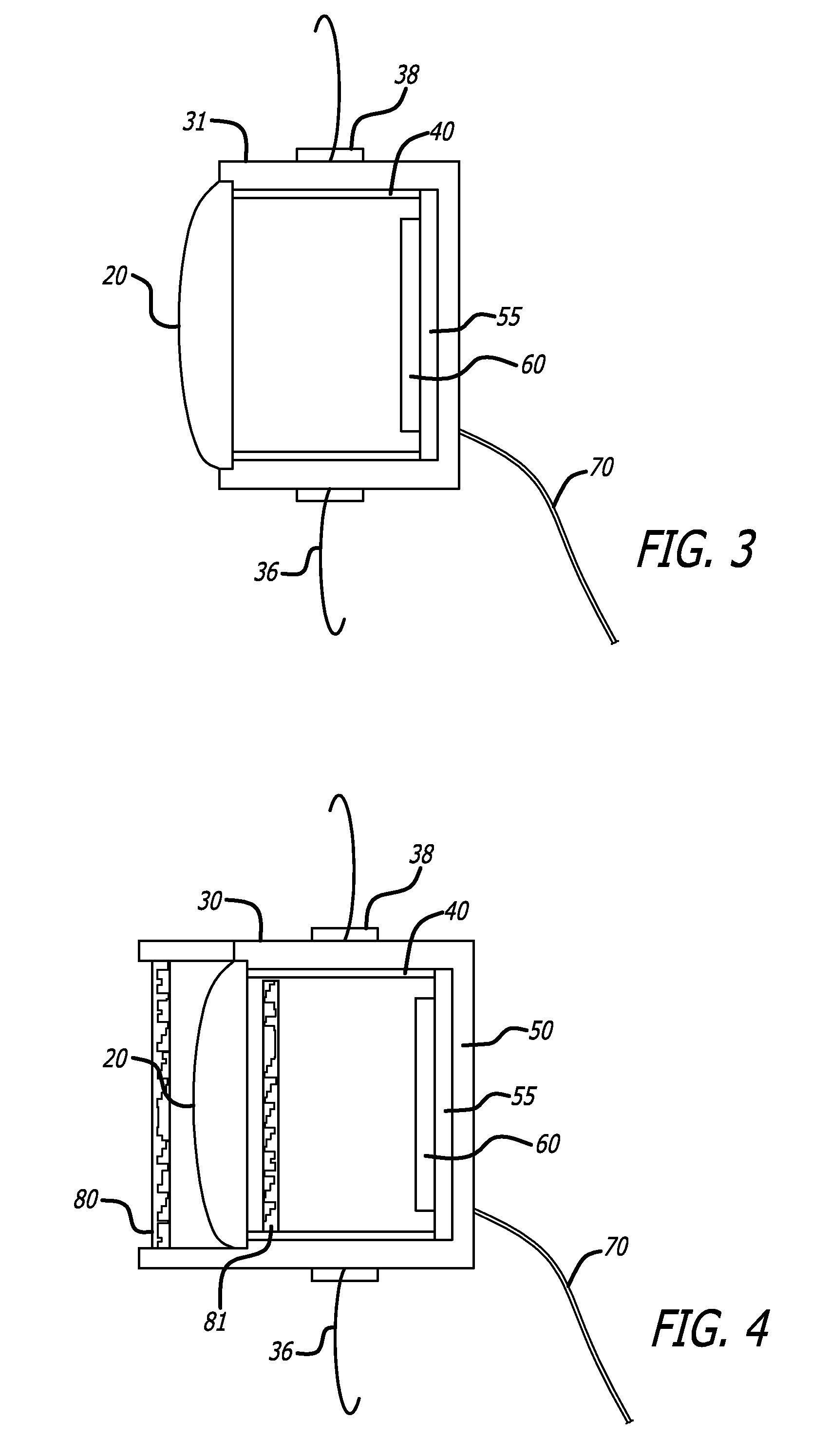Intraocular Camera for Retinal Prostheses
a retinal prosthesis and intraocular camera technology, applied in the field of prosthetic devices and methods, can solve the problems of increasing the difficulty of implantation of microstimulator arrays with photosensitive elements on planar substrates, catastrophic damage to the photoreceptor layer within the retina, and the inability to meet the needs of patients, etc., to achieve the effect of improving patient acceptability
- Summary
- Abstract
- Description
- Claims
- Application Information
AI Technical Summary
Benefits of technology
Problems solved by technology
Method used
Image
Examples
Embodiment Construction
[0032] The detailed description set forth below is intended as a description of exemplary embodiments of intraocular cameras for retinal prostheses and is not intended to represent the only embodiments in which such intraocular cameras and related image gathering methods can be practiced. The term “exemplary” used throughout this description means “serving as an example, instance, or illustration,” and should not necessarily be construed as preferred or advantageous over other embodiments. The detailed description includes specific details for the purpose of providing a thorough understanding of the principles of operation and various embodiments of intraocular cameras for retinal prostheses. However, it will be apparent to those skilled in the art that the development and implementation of intraocular cameras for retinal prostheses may be practiced without these specific details. In some instances, well-known structures and devices are shown in block diagram form in order to avoid ...
PUM
 Login to View More
Login to View More Abstract
Description
Claims
Application Information
 Login to View More
Login to View More - R&D
- Intellectual Property
- Life Sciences
- Materials
- Tech Scout
- Unparalleled Data Quality
- Higher Quality Content
- 60% Fewer Hallucinations
Browse by: Latest US Patents, China's latest patents, Technical Efficacy Thesaurus, Application Domain, Technology Topic, Popular Technical Reports.
© 2025 PatSnap. All rights reserved.Legal|Privacy policy|Modern Slavery Act Transparency Statement|Sitemap|About US| Contact US: help@patsnap.com



